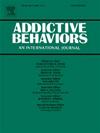Finding purpose: Integrated latent profile and machine learning analyses identify purpose in life as an important predictor of high-functioning recovery after alcohol treatment
IF 3.7
2区 医学
Q1 PSYCHOLOGY, CLINICAL
引用次数: 0
Abstract
Background
Recent investigations of recovery from alcohol use disorder (AUD) have distinguished subgroups of high and low functioning recovery in data from randomized controlled trials of behavioral treatments for AUD. Analyses considered various indicators of alcohol use, life satisfaction, and psychosocial functioning, and identified four recovery profiles from AUD three years following treatment.
Objectives
The present study integrates these profiles into a two-part machine learning framework, using recursive partitioning and random forests to distinguish a) clinical cut-points across 28 end-of-treatment biopsychosocial measurements that are predictive of high or low functioning recovery three years after treatment; and b) a rank-ordered list of the most salient variables for predicting individual membership in the high-functioning recovery sub-groups. Methods: This secondary data analysis includes individuals (n = 809; 29.7% female) in the outpatient arm of Project MATCH who completed the end-of-treatment assessment and three-year follow-up batteries.
Results
Recursive partitioning found individuals with low depressive symptoms and less than 25% drinking days were more likely to be in a high functioning recovery profile (68%), whereas those with at least mild depressive symptoms and low purpose in life were more likely to be in a low functioning recovery profile (70%). Random forests identified purpose in life, social functioning, and depressive symptoms as the best predictors of recovery profiles.
Conclusions
Recovery profiles are best predicted by variables often considered of secondary interest. We demonstrate the utility of two machine learning approaches, highlighting how random forests can overcome recursive partitioning limitations.
寻找目标:综合潜在特征和机器学习分析确定生活目标是酒精治疗后高功能恢复的重要预测因素
背景:最近对酒精使用障碍(AUD)康复的调查在AUD行为治疗的随机对照试验数据中区分了高功能恢复和低功能恢复亚组。分析考虑了酒精使用、生活满意度和社会心理功能的各种指标,并确定了治疗三年后AUD的四个恢复概况。本研究将这些概况整合到一个由两部分组成的机器学习框架中,使用递归划分和随机森林来区分a) 28个治疗结束时生物心理社会测量的临床切点,这些测量可预测治疗后三年内的高功能或低功能恢复;b)预测个人在高功能康复子群体中的成员资格的最显著变量的排序列表。方法:本二手资料分析纳入个体(n = 809;(29.7%女性),完成了治疗结束评估和三年随访。结果递归划分发现,低抑郁症状和饮酒天数少于25%的个体更有可能处于高功能恢复状态(68%),而那些至少有轻度抑郁症状和生活目标低的个体更有可能处于低功能恢复状态(70%)。随机森林发现,生活目标、社会功能和抑郁症状是康复概况的最佳预测指标。结论通常被认为是次要利益的变量最能预测恢复概况。我们展示了两种机器学习方法的实用性,突出了随机森林如何克服递归分区限制。
本文章由计算机程序翻译,如有差异,请以英文原文为准。
求助全文
约1分钟内获得全文
求助全文
来源期刊

Addictive behaviors
医学-药物滥用
CiteScore
8.40
自引率
4.50%
发文量
283
审稿时长
46 days
期刊介绍:
Addictive Behaviors is an international peer-reviewed journal publishing high quality human research on addictive behaviors and disorders since 1975. The journal accepts submissions of full-length papers and short communications on substance-related addictions such as the abuse of alcohol, drugs and nicotine, and behavioral addictions involving gambling and technology. We primarily publish behavioral and psychosocial research but our articles span the fields of psychology, sociology, psychiatry, epidemiology, social policy, medicine, pharmacology and neuroscience. While theoretical orientations are diverse, the emphasis of the journal is primarily empirical. That is, sound experimental design combined with valid, reliable assessment and evaluation procedures are a requisite for acceptance. However, innovative and empirically oriented case studies that might encourage new lines of inquiry are accepted as well. Studies that clearly contribute to current knowledge of etiology, prevention, social policy or treatment are given priority. Scholarly commentaries on topical issues, systematic reviews, and mini reviews are encouraged. We especially welcome multimedia papers that incorporate video or audio components to better display methodology or findings.
Studies can also be submitted to Addictive Behaviors? companion title, the open access journal Addictive Behaviors Reports, which has a particular interest in ''non-traditional'', innovative and empirically-oriented research such as negative/null data papers, replication studies, case reports on novel treatments, and cross-cultural research.
 求助内容:
求助内容: 应助结果提醒方式:
应助结果提醒方式:


